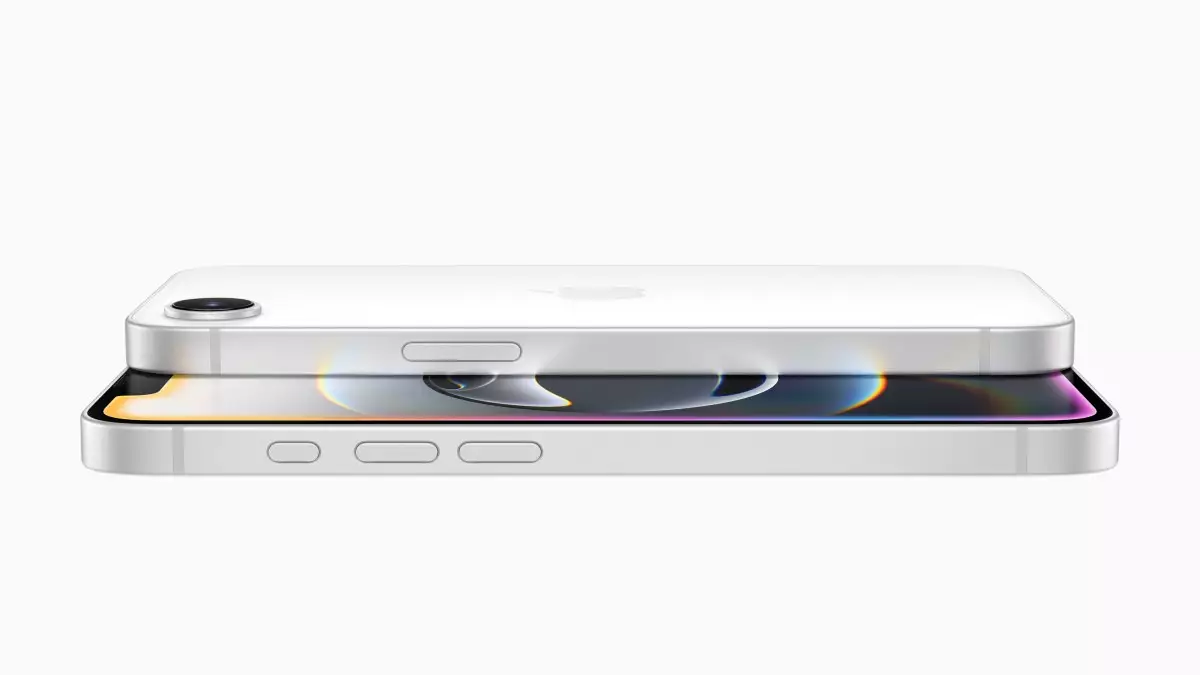Apple has once again made waves in the technology landscape by launching the iPhone 16e, the much-anticipated fourth-generation iteration of its budget smartphone. This release marks a significant shift from previous models and represents a strategic move for the company as it navigates challenges in its key markets, particularly China and India. Set to ship starting February 28, the iPhone 16e brings fresh features and a renewed identity, which begs an analysis of its potential impact on the smartphone ecosystem.
One of the most notable changes with the iPhone 16e is the departure from the SE branding. This evolution signals Apple’s intent to align the device more closely with its flagship products, fostering a seamless integration of the device within its larger line. Starting at $599, the iPhone 16e comes in at a premium of $100 compared to its predecessor, reflecting not just enhancements in technology but also the brand’s growing positioning in the budget smartphone segment. With this strategic pricing, Apple aims to redefine affordable luxury amidst intense competition from domestic manufacturers in China and India.
Central to the iPhone 16e’s features is its incorporation of Apple Intelligence, a robust artificial intelligence platform that seeks to compete with existing heavyweights like OpenAI’s ChatGPT and Google’s Gemini. The ability to run smaller AI models locally is a game-changer, allowing users to generate text summaries, write letters, and even create images directly on their devices. This functionality positions the iPhone 16e as not just a communications tool but also as a powerful assistant, tapping into the growing demand for AI-driven experiences in everyday technology. The integration of such cutting-edge features not only enhances user interaction but also underscores Apple’s commitment to innovation.
Underpinning these capabilities is the A18 processor, a leap forward in performance that is consistent with the rest of the iPhone 16 line. Equipped with a six-core architecture and a 16-core neural engine, the potential for robust AI processing is enormous. Additionally, the transition to USB-C reflects Apple’s strategy towards standardizing connector types across its devices, signifying a departure from the longstanding Lightning port. With an upgraded 6.1-inch OLED display, users can expect an immersive visual experience combined with the promise of improved battery life—up to 12 hours more than previous iterations.
Moreover, the transition from Touch ID to Face ID indicates Apple’s emphasis on security and user convenience. The return of the iPhone X’s camera notch, albeit nostalgic, allows for a larger display space crucial in a market that values premium visual experiences.
The single rear-facing 48-megapixel camera in the iPhone 16e introduces enhanced photography capabilities that appeal to both casual and professional users. Touted as a “two-in-one” camera, this innovative design not only allows for impressive 48-megapixel images but also enables 24-megapixel photography, appealing to a broader audience. The evolution of smartphone cameras continues to be a critical selling point, and Apple’s endeavor in this area positions them favorably against rivals.
As Apple rolls out this new device, it’s crucial to consider its timing amidst the backdrop of slipping market share in China, primarily driven by the resurgence of domestic competition. The partnership discussions with Tencent, ByteDance, and Alibaba indicate a proactive approach to enhancing the user experience for Chinese consumers, signaling a willingness to localize technology in response to market needs. The original iPhone SE had enjoyed robust sales in both China and India, and the introduction of the iPhone 16e could serve as a pivotal moment to reclaim lost ground.
With the iPhone 16e, Apple is not merely updating a product; it is reimagining its budget offering in a sophisticated and strategically significant manner. The blend of advanced AI capabilities and robust hardware not only caters to evolving consumer expectations but also positions Apple competitively against rising market rivals. As pre-orders open on February 21 and the device begins to ship the following week, all eyes will be on how well this new entrant revitalizes Apple’s presence in crucial markets while embodying the innovative spirit the brand has long been celebrated for.

